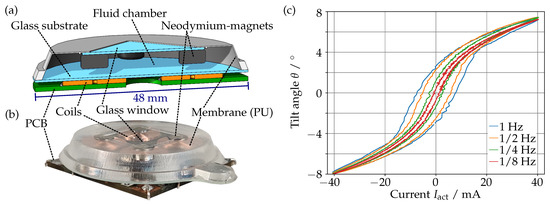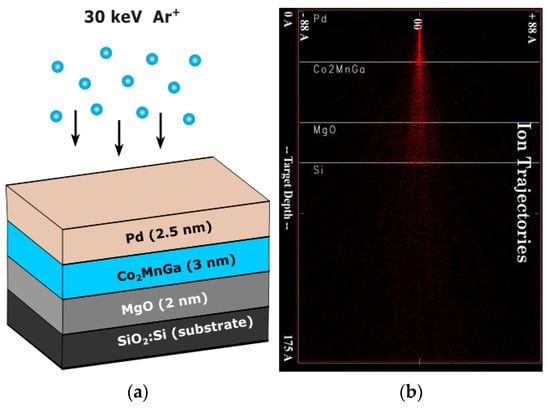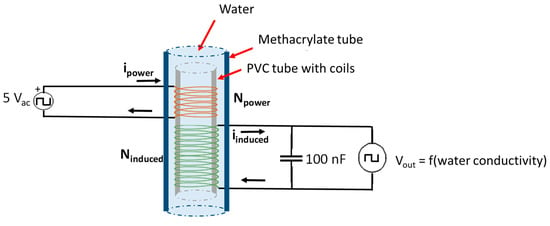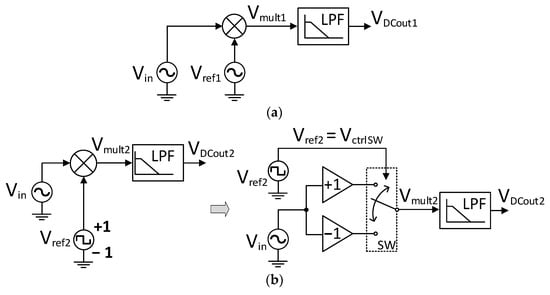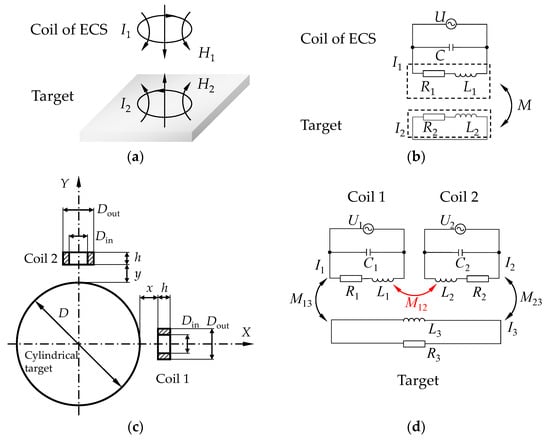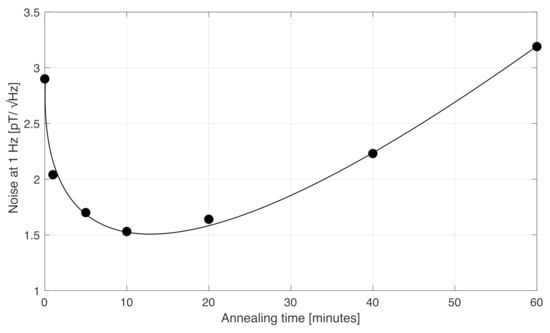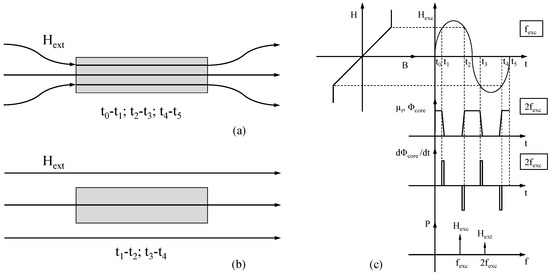Magnetic Sensors
A topical collection in Sensors (ISSN 1424-8220). This collection belongs to the section "Physical Sensors".
Viewed by 31242
Share This Topical Collection
Editors
 Prof. Dr. Arcady Zhukov
Prof. Dr. Arcady Zhukov
 Prof. Dr. Arcady Zhukov
Prof. Dr. Arcady Zhukov
E-Mail
Website
Collection Editor
Department of Material Physics at UPV/ EHU in San Sebastian, Universidad del Pais Vasco, San Sebastian, 48009 Bilbao, Spain
Interests: magnetic materials and applications; amorphous nano-crystalline and granular magnetic materials; hysteretic magnetic properties; magnetic wires; transport properties (giant magneto-impedance effect, magneto-resistance); magnetic sensors
Special Issues, Collections and Topics in MDPI journals
 Dr. Nicolò Marconato
Dr. Nicolò Marconato
 Dr. Nicolò Marconato
Dr. Nicolò Marconato
E-Mail
Website
Collection Editor
Department of Industrial Engineering, Università degli Studi di Padova, 35131 Padova, Italy
Interests: magnetic sensors; magnetic diagnostics; embedded electrostatic sensors; electromagnetic modelling; high-voltage measurement and modelling; active control; nuclear fusion science and technology
Special Issues, Collections and Topics in MDPI journals
Topical Collection Information
Dear Colleagues,
Magnetic sensors play an important role in many industries (microelectronics, security and electronic surveillance, automotive, aerospace and aircraft, home entertainment, computer science, electrical engineering, magnetic recording, construction monitoring, sensorics among others), providing the ability to detect events or changes in the environment and monitor such events through other electronic devices, for example, through a computer processor. Therefore, research and development in the field of magnetic sensors have recently attracted great attention from academia and industry.
In the last several years, numerous high-profile papers have been published by the community involved in the field related to development and design of novel high-performance magnetic sensors.
Recent trends in magnetic sensorics are focused on miniaturization, the improvement of features, and the finding of new operating principles based on fundamental studies of new materials and phenomena.
This Topical Collection will focus on the latest developments, research findings, ideas for highly sensitive magnetic devices and applications, and magnetic sensing technology, focused on basic phenomena and fundamental aspects of magnetic materials suitable for magnetic sensors and applications as well as on wireless non-destructive control and monitoring, wearable electronics, and medicine involving magnetic sensorics.
Both reviews and original research papers will be considered. Reviews should provide an up-to-date, well-balanced overview of the current state of the art of a particular application and include the main results from other groups.
The topics of this Topical Collection encompass but are not restricted to the following areas:
- Magnetic sensors and actuators including, Hall-effect devices, magnetometers, magnetoimpedance sensors, magnetoresistance sensors, magnetoelastic sensors;
- Novel magnetic materials for sensor and actuator applications and their advanced processing;
- Fundamentals and physics involving basic effects, theory, modeling of magnetic sensors;
- Magnetic measurements and instrumentation, measurement standards;
- Smart materials and composites for wireless and non-destructive control including tunable metamaterials;
- Development of magnetic sensors applications including biomedicine, electronic surveillance, electrical engineering, informatics, magnetic recording, construction monitoring, automobile and aircraft industries, among other
Prof. Dr. Arcady Zhukov
Prof. Dr. Nicolò Marconato
Collection Editors
Manuscript Submission Information
Manuscripts should be submitted online at www.mdpi.com by registering and logging in to this website. Once you are registered, click here to go to the submission form. Manuscripts can be submitted until the deadline. All submissions that pass pre-check are peer-reviewed. Accepted papers will be published continuously in the journal (as soon as accepted) and will be listed together on the collection website. Research articles, review articles as well as short communications are invited. For planned papers, a title and short abstract (about 100 words) can be sent to the Editorial Office for announcement on this website.
Submitted manuscripts should not have been published previously, nor be under consideration for publication elsewhere (except conference proceedings papers). All manuscripts are thoroughly refereed through a single-blind peer-review process. A guide for authors and other relevant information for submission of manuscripts is available on the Instructions for Authors page. Sensors is an international peer-reviewed open access semimonthly journal published by MDPI.
Please visit the Instructions for Authors page before submitting a manuscript.
The Article Processing Charge (APC) for publication in this open access journal is 2600 CHF (Swiss Francs).
Submitted papers should be well formatted and use good English. Authors may use MDPI's
English editing service prior to publication or during author revisions.
Published Papers (11 papers)
Open AccessArticle
Applicability of Small and Low-Cost Magnetic Sensors to Geophysical Exploration
by
Filippo Accomando and Giovanni Florio
Viewed by 573
Abstract
In the past few decades, there has been a notable technological advancement in geophysical sensors. In the case of magnetometry, several sensors were used, having the common feature of being miniaturized and lightweight, thus idoneous to be carried by UAVs in drone-borne magnetometric
[...] Read more.
In the past few decades, there has been a notable technological advancement in geophysical sensors. In the case of magnetometry, several sensors were used, having the common feature of being miniaturized and lightweight, thus idoneous to be carried by UAVs in drone-borne magnetometric surveys. A common feature is that their sensitivity ranges from 0.1 to about 200 nT, thus not comparable to that of optically pumped, standard fluxgate or even proton magnetometers. However, their low cost, volume and weight remain very interesting features of these sensors. In fact, such sensors have the common feature of being very inexpensive, so new ways of making surveys using many of these sensors could be devised, in addition to the possibility, even with limited resources, of creating gradiometers by combining two or more of them. In this paper, we explore the range of applicability of small tri-axial magnetometers commonly used for attitude determination in several devices. We compare the results of surveys performed with standard professional geophysical instruments with those obtained using these sensors and find that in the presence of strongly magnetized sources, they succeeded in identifying the main anomalies.
Full article
►▼
Show Figures
Open AccessArticle
A Two-Turn Shielded-Loop Magnetic Near-Field PCB Probe for Frequencies up to 3 GHz
by
Mario Filipašić and Martin Dadić
Cited by 2 | Viewed by 1692
Abstract
This paper proposes a novel design of shielded two-turn near-field probe with focus on high sensitivity and high electric field suppression. A comparison of different two-turn loop topologies and their influence on the probe sensitivity in the frequency range up to 3 GHz
[...] Read more.
This paper proposes a novel design of shielded two-turn near-field probe with focus on high sensitivity and high electric field suppression. A comparison of different two-turn loop topologies and their influence on the probe sensitivity in the frequency range up to 3 GHz is presented. Furthermore, a comparison between a single loop probe and a two-turn probe is given and different topologies of the two-turn probe are analyzed and evaluated. The proposed probes were simulated using Ansys HFSS and manufactured on a standard FR4 substrate four-layer printed circuit board (PCB). A measurement setup for determining probe sensitivity and electric field suppression ratio using an in-house made PCB probe stand, vector network analyzer, microstrip line (MSL) and the manufactured probe is presented. It is shown that using a two-turn probe design it is possible to increase the probe sensitivity while minimizing the influence on the probe spatial resolution. The average sensitivity of the proposed two-turn probe compared to the conventional design is increased by 10.1 dB in the frequency range from 10 MHz up to 1 GHz.
Full article
►▼
Show Figures
Open AccessArticle
Self-Sensing of a Magnetically Actuated Prism
by
Pascal M. Weber, Ulrike Wallrabe and Matthias C. Wapler
Cited by 2 | Viewed by 1397
Abstract
We demonstrate a method for self-sensing of a magnetically actuated prism that can be used, e.g., in a feedback-loop without the need of additional sensors. In order to use the impedance of the actuation coils as a measurement parameter, we first obtained the
[...] Read more.
We demonstrate a method for self-sensing of a magnetically actuated prism that can be used, e.g., in a feedback-loop without the need of additional sensors. In order to use the impedance of the actuation coils as a measurement parameter, we first obtained the optimal measurement frequency that is well separated from the actuation frequencies and at the same time provides the best compromise between sensitivity to the position and robustness. We then developed a combined actuation and measurement driver, and correlated its output signal to the mechanical state of the prism using a defined calibration sequence. We demonstrate that we can reliably measure the state of each actuator and determine the tilt angle of the prism with an accuracy of
in the polar angle over a range of
and
mrad in the azimuthal angle.
Full article
►▼
Show Figures
Open AccessArticle
Shaping Perpendicular Magnetic Anisotropy of Co2MnGa Heusler Alloy Using Ion Irradiation for Magnetic Sensor Applications
by
Anmol Mahendra, Peter P. Murmu, Susant Kumar Acharya, Atif Islam, Holger Fiedler, Prasanth Gupta, Simon Granville and John Kennedy
Cited by 4 | Viewed by 3121
Abstract
Magnetic sensors are key elements in many industrial, security, military, and biomedical applications. Heusler alloys are promising materials for magnetic sensor applications due to their high spin polarization and tunable magnetic properties. The dynamic field range of magnetic sensors is strongly related to
[...] Read more.
Magnetic sensors are key elements in many industrial, security, military, and biomedical applications. Heusler alloys are promising materials for magnetic sensor applications due to their high spin polarization and tunable magnetic properties. The dynamic field range of magnetic sensors is strongly related to the perpendicular magnetic anisotropy (PMA). By tuning the PMA, it is possible to modify the sensing direction, sensitivity and even the accuracy of the magnetic sensors. Here, we report the tuning of PMA in a Co
2MnGa Heusler alloy film via argon (Ar) ion irradiation. MgO/Co
2MnGa/Pd films with an initial PMA were irradiated with 30 keV
40Ar
+ ions with fluences (ions·cm
−2) between 1 × 10
13 and 1 × 10
15 Ar·cm
−2, which corresponds to displacement per atom values between 0.17 and 17, estimated from Monte-Carlo-based simulations. The magneto optical and magnetization results showed that the effective anisotropy energy (
Keff) decreased from ~153 kJ·m
−3 for the un-irradiated film to ~14 kJ·m
−3 for the 1 × 10
14 Ar·cm
−2 irradiated film. The reduced
Keff and PMA are attributed to ion-irradiation-induced interface intermixing that decreased the interfacial anisotropy. These results demonstrate that ion irradiation is a promising technique for shaping the PMA of Co
2MnGa Heusler alloy for magnetic sensor applications.
Full article
►▼
Show Figures
Open AccessArticle
Highly Sensitive Tunable Magnetometer Based on Superconducting Quantum Interference Device
by
Antonio Vettoliere and Carmine Granata
Cited by 9 | Viewed by 3257
Abstract
In the present article, experimental results regarding fully integrated superconducting quantum interference devices (SQUID), including a circuit to tune and optimize the main sensor device characteristics, are reported. We show the possibility of modifying the critical current of a SQUID magnetometer in liquid
[...] Read more.
In the present article, experimental results regarding fully integrated superconducting quantum interference devices (SQUID), including a circuit to tune and optimize the main sensor device characteristics, are reported. We show the possibility of modifying the critical current of a SQUID magnetometer in liquid helium by means of a suitable heating circuit. This allows us to improve the characteristics of the SQUID sensor and in particular to optimize the voltage–magnetic flux characteristic and the relative transfer factor (responsivity) and consequently to also improve the flux and magnetic field noise. It is also possible to reset the SQUID sensor in case of entrapment of magnetic flux, avoiding taking it out of the helium bath. These results are very useful in view of most SQUID applications such as those requiring large multichannel systems in which it is desirable to optimize and eventually reset the magnetic sensors in a simple and effective way.
Full article
►▼
Show Figures
Open AccessArticle
The Influence of Magnetic Field of AMB on Eddy-Current Sensor Operation
by
Paulina Kurnyta-Mazurek and Artur Kurnyta
Cited by 2 | Viewed by 2388
Abstract
This paper presents laboratory results on the influence of the magnetic field of an active magnetic bearing (AMB) on the eddy-current sensor operation. The magnetic suspension technology enables continuous diagnostics and monitoring of a rotary machine and eliminates drawbacks of classical bearing properties.
[...] Read more.
This paper presents laboratory results on the influence of the magnetic field of an active magnetic bearing (AMB) on the eddy-current sensor operation. The magnetic suspension technology enables continuous diagnostics and monitoring of a rotary machine and eliminates drawbacks of classical bearing properties. The magnetic bearing system usually consists of two radial and one axial magnetic bearing. It is combined with a control unit, amplifiers and sensors for measuring the instantaneous position of the shaft. For this purpose, eddy-current sensors are frequently used. They operate in close proximity to the electromechanical actuators; therefore, the question arises whether the actuators do not interfere with the correct operation of these sensors. In the paper, the test rig and research plan prepared for that investigation are delivered. Measurement signals were registered from four control channels for different configurations of power supplies for system elements, e.g., with sensors and AMBs turned off, with sensors turn on and at normal work. Recorded time courses are presented and discussed in the paper. For the prepared test rig and AMB/eddy-current sensor configuration, no significant influence of the generated magnetic field from the support is found for the eddy-current sensor output.
Full article
►▼
Show Figures
Open AccessArticle
Low-Cost Microcontroller-Based Multiparametric Probe for Coastal Area Monitoring
by
Lorena Parra, Sandra Viciano-Tudela, David Carrasco, Sandra Sendra and Jaime Lloret
Cited by 14 | Viewed by 3458
Abstract
The monitoring of the coastal environment is a crucial factor in ensuring its proper management. Nevertheless, existing monitoring technologies are limited due to their cost, temporal resolution, and maintenance needs. Therefore, limited data are available for coastal environments. In this paper, we present
[...] Read more.
The monitoring of the coastal environment is a crucial factor in ensuring its proper management. Nevertheless, existing monitoring technologies are limited due to their cost, temporal resolution, and maintenance needs. Therefore, limited data are available for coastal environments. In this paper, we present a low-cost multiparametric probe that can be deployed in coastal areas and integrated into a wireless sensor network to send data to a database. The multiparametric probe is composed of physical sensors capable of measuring water temperature, salinity, and total suspended solids (TSS). The node can store the data in an SD card or send them. A real-time clock is used to tag the data and to ensure data gathering every hour, putting the node in deep sleep mode in the meantime. The physical sensors for salinity and TSS are created for this probe and calibrated. The calibration results indicate that no effect of temperature is found for both sensors and no interference of salinity in the measuring of TSS or vice versa. The obtained calibration model for salinity is characterised by a correlation coefficient of 0.9 and a Mean Absolute Error (MAE) of 0.74 g/L. Meanwhile, different calibration models for TSS were obtained based on using different light wavelengths. The best case was using a simple regression model with blue light. The model is characterised by a correlation coefficient of 0.99 and an MAE of 12 mg/L. When both infrared and blue light are used to prevent the effect of different particle sizes, the determination coefficient of 0.98 and an MAE of 57 mg/L characterised the multiple regression model.
Full article
►▼
Show Figures
Open AccessArticle
Analog Lock-In Amplifier Design Using Subsampling for Accuracy Enhancement in GMI Sensor Applications
by
José M. Algueta-Miguel, J. Jesús Beato-López and Antonio J. López-Martín
Cited by 6 | Viewed by 3349
Abstract
A frequency downscaling technique for enhancing the accuracy of analog lock-in amplifier (LIA) architectures in giant magneto-impedance (GMI) sensor applications is presented in this paper. As a proof of concept, the proposed method is applied to two different LIA topologies using, respectively, analog
[...] Read more.
A frequency downscaling technique for enhancing the accuracy of analog lock-in amplifier (LIA) architectures in giant magneto-impedance (GMI) sensor applications is presented in this paper. As a proof of concept, the proposed method is applied to two different LIA topologies using, respectively, analog and switching-based multiplication for phase-sensitive detection. Specifically, the operation frequency of both the input and the reference signals of the phase-sensitive detector (PSD) block of the LIA is reduced through a subsampling process using sample-and-hold (SH) circuits. A frequency downscaling from 200 kHz, which is the optimal operating frequency of the employed GMI sensor, to 1 kHz has been performed. In this way, the proposed technique exploits the inherent advantages of analog signal multiplication at low frequencies, while the principle of operation of the PSD remains unaltered. The circuits were assembled using discrete components, and the frequency downscaling proposal was experimentally validated by comparing the measurement accuracy with the equivalent conventional circuits. The experimental results revealed that the error in the signal magnitude measurements was reduced by a factor of 8 in the case of the analog multipliers and by a factor of 21 when a PSD based on switched multipliers was used. The error in-phase detection using a two-phase LIA was also reduced by more than 25%.
Full article
►▼
Show Figures
Open AccessArticle
Coupling Interference between Eddy Current Sensors for the Radial Displacement Measurement of a Cylindrical Target
by
Weifeng Zhang, Jianguo Bu, Dongjie Li, Ke Zhang and Ming Zhou
Cited by 4 | Viewed by 2809
Abstract
In the radial displacement measurement of a small-sized cylindrical target, coupling interference between eddy current sensors reduces the accuracy of the measurement. In this study, finite element method (FEM) simulation based on ANSYS Maxwell was adopted to investigate the relationships between the coupling
[...] Read more.
In the radial displacement measurement of a small-sized cylindrical target, coupling interference between eddy current sensors reduces the accuracy of the measurement. In this study, finite element method (FEM) simulation based on ANSYS Maxwell was adopted to investigate the relationships between the coupling coefficient of the sensors and different parameters including the lift-off, cylinder diameter, axis angle, material, and excitation frequency. The experimental results were consistent with the simulation results. The coupling interference between the sensors increased with the decrease in the lift-off and cylinder diameter. The coupling effect decreased significantly when the probe axis angle increased to 120°, and the decrease in the sensor sensitivity was acceptable. A polynomial fitting function fitted the output signal well. A compensation method was given based on the compensation necessity evaluation. The results showed that the error of the rotor motion track was significantly decreased after compensation.
Full article
►▼
Show Figures
Open AccessArticle
An Improved Composition of CoFeSiB Alloy for Orthogonal Fluxgates
by
Mattia Butta, Michal Janošek, Jakub Pařez, Alexander Valeriano Inchausti and Horia Chiriac
Cited by 2 | Viewed by 2691
Abstract
Orthogonal fluxgates in fundamental mode based on
cores have recorded very low noise in literature, especially if Joule annealing is performed on the core for a short period of time. However, for
[...] Read more.
Orthogonal fluxgates in fundamental mode based on
cores have recorded very low noise in literature, especially if Joule annealing is performed on the core for a short period of time. However, for annealing time longer than 20–30 min, the noise of the sensor has a tendency to increase. In this work, we investigated this phenomenon, and we have found its origin in a monotonic increase of magnetostriction during the annealing process. We show that the wires with vanishing magnetostriction in their as-cast form exhibit positive magnetostriction after long-time annealing (more than 30 min), which increases the noise of the sensor. After researching the effect of the magnetostriction after annealing on the noise, we propose an alloy with a reduced amount of iron. Less iron leads to a larger as-cast negative magnetostriction, which becomes almost zero after long-time annealing (60 min), bringing further reduction of noise. We prove this effect on two wires from two different manufacturers, although with the same composition. The noise decrease with prolonged annealing is mainly observable in the low-frequency region: at 100 mHz, the noise of a single-wire sensor decreased from
to
when the annealing time was prolonged from 10 to 60 min.
Full article
►▼
Show Figures
Open AccessArticle
Design of Integrated Micro-Fluxgate Magnetic Sensors: Advantages and Challenges of Numerical Analyses
by
Nicolò Marconato
Cited by 7 | Viewed by 4568
Abstract
Miniaturization and on-chip integration are major lines of research in many branches of science and technology developments, undoubtedly in sensor technology. Fluxgate magnetometers are very sensitive, and accurate magnetic sensors able to detect weak fields both AC and DC, which in recent years
[...] Read more.
Miniaturization and on-chip integration are major lines of research in many branches of science and technology developments, undoubtedly in sensor technology. Fluxgate magnetometers are very sensitive, and accurate magnetic sensors able to detect weak fields both AC and DC, which in recent years saw a great effort in minimizing their dimensions, weight, and power consumption. The physics behind the fluxgate principle is rather complex and makes simulations difficult and only partially used in the literature. The limited physical access to micro sensors for measurements and the need to optimize the entire integrated system, including the sensor geometry and the excitation and readout circuits, make numerical analyses particularly useful in the design of miniaturized sensors. After a thorough review of the miniaturized solutions proposed so far, the present paper examines in detail the possibility of adopting a model based approach for designing miniaturized fluxgate sensors. The model of the fluxgate effect of two different technologies proposed in the literature has been implemented to benchmark simulation results with real data. In addition to the advantages for an optimized design, the implementation and computational challenges of the numerical analyses are precisely outlined.
Full article
►▼
Show Figures
Planned Papers
The below list represents only planned manuscripts. Some of these
manuscripts have not been received by the Editorial Office yet. Papers
submitted to MDPI journals are subject to peer-review.
Title: Design of integrated micro-fluxgate magnetic sensors: advantages and challenges of numerical analyses
Authors: Nicolo' Marconato
Affiliation: University of Padova
Abstract: Miniaturization and on-chip integration is a major line of research in many branches of science and technology developments, undoubtedly in sensor technology. Fluxgate magnetometers are very sensitive and accurate magnetic sensors able to detect weak fields both AC and DC, which in recent years saw a great effort in minimizing their dimensions, weight, and power consumption. The physics behind the fluxgate principle is rather complex and makes simulations difficult and only partially used in the literature. The limited physical access to micro sensors for measurements and the need to optimize the whole integrated system, including the magnetometer geometry and the excitation and readout circuits, make instead numerical analyses particularly useful in the design of miniaturized sensors.
After a thorough review of the miniaturized solutions proposed so far, the present paper examines in detail the possibility to adopt a model based approach for designing miniaturized fluxgate sensors. The model of the fluxgate effect of two different technologies proposed in literature has been implemented to benchmark the simulation results with real data. Besides the advantages for an optimized design, the implementation and computational challenges of the numerical analyses are precisely outlined.
Title: Analysis of ship’s magnetization effect on shipboard three-component magnetic data using a scalar magnetometer
Authors: 1Hanjin Choe, 2Nobukazu Seama, 1Hyeonuk Shin
Affiliation: 1Pusan National University, 2Kobe University
Abstract: Shipboard three-component magnetometer offers vector data and has many advantages, but it requires correction for the ship's magnetism. Existing methods struggle, especially with viscous magnetization. This study present an advanced correction method using simultaneous data from a towed scalar magnetometer. It significantly reduces differences between datasets, resulting in highly accurate vector data. This improvement allows detailed analysis of magnetic components, aiding research in plate tectonics, mineral exploration, and more.









